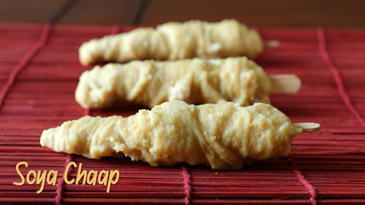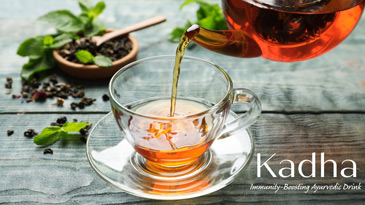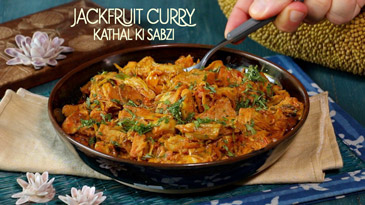Veg Dum Biryani Recipe | How To Make Veg Dum Biryani | Layered Biryani
+Vegetable Biryani or Veg Dum Biryani is a popular vegetarian dish fit for celebratory banquets and feasts. It is a deliciously fragrant blend of rice and vegetables and is ideal to serve to special guests or at parties where you want to impress with your culinary prowess.
It is believed that the recipe for vegetable biryani originated in the courts of the Mughal emperors where it was created for the vegetarian days in the court, a practice started by Akbar and continued by his son Jehangir, and grandson Shah Jahan. The popularity of this dish spread fast and wide in India, hastened by its deliciousness and the large percentage of vegetarians across the country Vegetarian biryani is now also a staple at wedding banquets and feasts. The use of ‘dum’ method of cooking after the layering of vegetables and rice, gives this dish an unparalleled depth of flavours which are gratifying.
Our rich and delectable vegetable biryani recipe is adapted from the book ‘The Bangala Table: Flavors and Recipes from Chettinad’ written by Sumeet Nair and Meenakshi Meyyappan. It is a pakki Biryani (one in which the rice and vegetables are cooked before layering) which is redolent of the fragrance of long-grained basmati rice and aromatic from the use of whole spices such as bay leaf, cardamom, and cinnamon. Cauliflower florets, fresh green peas, and potatoes, all provide their unique flavour and characteristic texture to this veg dum biryani recipe. Mint and coriander enhance this dish with their fresh taste and herby aroma.
The subtle heat and a unique taste in our vegetable biryani recipe comes from the use of a variety of dried red chillies called goondu milagai. Goondu milagai is used commonly in the food of Tamil Nadu, especially in Chettinad cuisine. These chillies are also known as Ramnad mundu chillies as they are grown in the Ramnad district of Tamil Nadu. The word goondu translates to ‘fat’ and refers to the shape of the chillies which are round and fat in appearance. These chillies can be procured from the larger grocery store chains in various cities of India as well as the specialty stores catering to the Tamil population in pockets of various cities.
Easy Tips on How to Make Vegetable Biryani:
If you are wondering how to make Vegetable Biryani, you must first know that though preparing any Veg Dum Biryani takes longer than most other rice recipes, you could save time by working ahead. The vegetables can be prepared and cooked the previous night, though we always prefer to make them fresh. You could also make a checklist of all other ingredients to be used for the vegetable biryani and have them prepared and assembled ahead of making it. Basmati rice is the preferred variety of rice to make this biryani as its fragrance and longer grains are ideal for this dish.
One must not skip the step of soaking the rice while attempting this recipe as this step ensures fluffy separate grains of rice, which are the hallmark of a perfect biryani.
The use of ghee helps enhance the richness, flavour, and aroma of the vegetable biryani giving the dish the perfect finish. We feel the use of ghee for the best vegetable biryani is essential.
Vegetable Biryani Recipe Variations:
Though we have specified cauliflower, peas, and potatoes for our Vegetable Dum Biryani recipe, you could use local and seasonally available vegetables such as carrots and beans while making it. Vegetarians can add protein to this recipe by adding cubed and lightly fried paneer to this dish. One can also add medium-sized soya granules to this recipe. When done, you could garnish it with ginger juliennes and sliced chillies. Mint and birista or browned onions can make for a great garnish and an added layer of flavour. This veg dum biryani can be eaten for lunch or dinner.
This vegetable biryani is the centre of attraction at any dining table and can have mirchi ka salan, kachumber, and pomegranate raita playing the supporting roles. Veg Biryani can also be served with a variety of other accompaniments such as pickle, sliced onions, mixed salad, and fried papad or South-Indian appalams on the side.
Find the best vegetable biryani recipe step by step with all ingredients and easy instructions and method below and watch our supporting vegetable biryani recipe video to see all processes and details.
If you enjoyed making Vegetable Dum Biryani from our instructional video, you will also enjoy making:
Paneer Biryani
Kathal ki Biryani | Jackfruit Biryani
Corn Biryani
Veg Tahiri
Tomato Rice
Hyderabadi Dum Biryani
Chicken Biryani Hyderabad Style
Fish Biryani, Moplah Kerala-Style
Chicken Kofta Biryani
Biryani Masala Powder
Vermicelli Pulao
Village Style Chicken Biryani
Or see all our Vegetarian Recipes right here!-
-
RECIPE
INGREDIENTS
1 1⁄2 cups basmati rice, (about 300 grams) rice, preferably a long grain aromatic like basmati
1 1⁄2 teaspoons sea salt, or to taste
3⁄4 cauliflower, small head (about 300 grams), broken into small florets
1 carrot, 1 large (about 120 grams), cut into 1-inch wedges
1 potato, medium (about 90 grams), peeled and chopped into 1-inch cubes
3⁄4 cup green peas, frozen, or blanched if fresh
1 cup mint leaves, chopped, loosely packed
1 cup coriander leaves, (about 40 grams) fresh coriander leaves loosely packed
3 tablespoons ghee
5 green cardamom pods
1 inch cinnamon, 2-inch piece
2 bay leaves (tej patta)
1 1⁄2 onions, about 150 grams, peeled and finely chopped
1 1⁄2 teaspoons turmeric powder (haldi), (heaping teaspoons)
3 green chillies
2 1⁄2 teaspoons red chilli powder, mild, preferably made from goondu milagai
1 1⁄2 teaspoons ginger, peeled and minced ginger
1 1⁄2 teaspoons garlic, peeled and minced garlic
1 1⁄2 tomato, (about 150 grams), chopped
1 1⁄2 teaspoons sea salt, or to taste
3⁄4 cup coconut milk, 1st press
3 teaspoons yogurt
2 1⁄2 teaspoons lime juice
1 1⁄2 tablespoons ghee
COOKING METHOD
- Place rice in a bowl and wash under running water, gently stirring and mixing the rice with your hands, draining each time the bowl fills up. Do this 2 to 3 times till the water runs clear; then let soak in fresh water, covered, for 1 hour. Drain.
- Place a separate saucepan over medium heat, and add rice and 6 cups water. Let water come to a boil, then after 5-6 minutes of cooking, add 1½ teaspoons sea salt, and cook another 5 minutes. The rice should be soft but not overcooked. Drain and set aside.
- Soak cauliflower, carrot, potato, and peas in water. Separately, soak mint and coriander leaves in water.
- Pour ghee into a large saucepan or open pressure cooker over medium heat. When hot, add cardamoms and cinnamon. Once you the cardamoms have plumped up nicely, about 30 seconds, add bay leaves and stir. Follow by sliding onions into the pan and sautéing till lightly coloured, about 2 minutes, before adding turmeric and green chillies. Stir and add chilli powder, ginger, and garlic. Add tomato and 1½ teaspoon sea salt. Continue to stir, scraping the bottom of the pan often so that the masala does not stick.
- Squeeze out most of the water from mint and coriander leaves and add to the masala.
- Once the oil separates from the masala, add the vegetables: cauliflower, carrot, potato, and peas), stirring to coat well. Sauté the vegetables for about 2 minutes. Stir and scrape vigorously, continuing to get all the bits from bottom of pan.
- Add 2½ cups water; cover and bring to a boil, Simmer, covered, 8-10 minutes or until vegetables are cooked, stirring occasionally.
- Uncover and add coconut milk, yogurt, and lime juice, stirring to incorporate. Add salt to taste. Remove from heat.
- Spread a little less than half of the rice at the bottom of a medium pan with a lid. Layer half the vegetable mixture on top of the rice. Cover with almost the rest of the rice, reserving some. Layer the remaining vegetable mixture and any remaining liquid. Top with the extra reserved rice.
- Drizzle ghee onto the biryani. Cover pot tightly, return to low heat to give it dum for 5 minutes. Serve hot, cutting through all layers.
Recipe Credits: “The Bangala Table: Flavors and Recipes from Chettinad” by Sumeet Nair and Meenakshi Meyyappan, with Jill Donenfeld
Serves: 4 as part of a larger meal
Prep Time: 25 minutes plus 1 hour unattended soaking time for rice
Cook Time: 45 minutes
- Place rice in a bowl and wash under running water, gently stirring and mixing the rice with your hands, draining each time the bowl fills up. Do this 2 to 3 times till the water runs clear; then let soak in fresh water, covered, for 1 hour. Drain.
-
Tags:vegetable biryani, vegetable biryani recipe, vegetable biryani recipe step by step
-

-
RATE IT:
- ★
- ★
- ★
- ★
- ★
- nah
-











